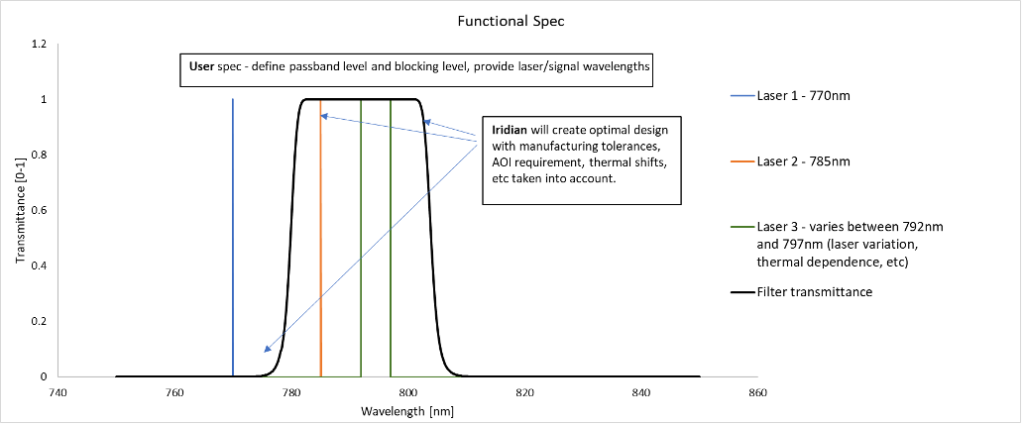In designing a filter solution, the filter manufacturer takes the values requested by the user and adds additional design margin to account for both functional effects (such as wavelength shift due to angle variation, thermal induced wavelength shift, etc) and filter manufacturing effects (such as edge steepness, nonuniformity, wavelength targeting – see our technical note “Wavelength budgeting for optical filters”).
Often customers translate functional requirements of their system (e.g. pass light source 1 @ λ1, block light source 2 @ λ2) and add wavelength “padding” to the values to create the “filter spec” (e.g. CWL, FWHM, etc). When the values provided have been “padded” the result is over margining (or under margining) of the transmission/blocking wavelengths. This result is a more costly solution with compromised performance. Given the functional requirements of your system, Iridian’s expert designers can produce a filter specification that will provide the best performance for your request.

